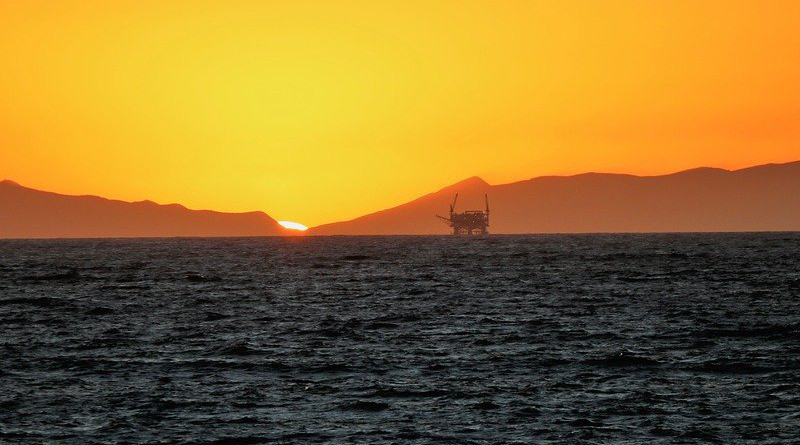Is Oil At $80 Sustainable In 2022? – Analysis
By Arab News
By Mohammed Al-Shatti*
Crude oil prices traded above $80 per barrel for the first time since last November, largely supported by easing concerns over the negative impact of the omicron COVID-19 variant and signs of robust oil demand in major oil-consuming countries. But will this level remain throughout the year?
Current temporary factors are driving prices to break the $80 level but this can’t be expected to continue throughout 2022 as the situation is likely to reverse and supply will exceed demand.
The surplus prevails putting pressure on prices so probably levels of $65 – 75 is more sustainable for 2022. There are factors that continue to support prices and protect them from fall. These related to lower production by some producers, and falling spare capacity
Investors were optimistic that global oil demand would further recover this year and could absorb additional oil supply. A large drop in US crude stocks in recent weeks and supply disruptions in several regions added support to oil prices.
Before the start of 2022, almost all industries projected surplus to prevail which means pressure on prices. However, as the year started, prices broke $80 per barrel.
This reflects various events happening, starting with the new OPEC outlook showing a tighter market and ending its Jan. 4 meeting with approval of a higher production of 400,000 barrels per day for February.
Omicron puts a lid on fuel demand. Perspectives are changing with regards to the effect of omicron on fuel demand after the Energy Information Administration reported a large stock build for gasoline over the last week of the year.
Overall, around 1 million bpd of production is currently offline because of disruptions in Ecuador, Libya and Nigeria. Libyan oil output is 729,000 bpd, the National Oil Corp media office said on Thursday, down from a high of more than 1.3 million bpd last year.
Markets continue to monitor unrest in Kazakhstan and the possible impact on its production. Kazakhstan is the largest producer in the former Soviet Union, at around 1.6 million bpd. Kazakhstan’s protests continue to rage across the country. This unrest overshadows the tensions between Russia and Ukraine, as well as the Iran nuclear deal negotiations.
Overall, global demand is showing recovery and expansion with mobility also recovering. In fact, OPEC is projecting that demand levels will return to pre-pandemic levels in 2022.
Asian oil product demand has overall recovered, most of this has come from China, the key provider of growth for petrochemical feedstock demand in 2021, and India, where total product demand in Q4 returned to 2019 levels.
Jet fuel demand in Asia has, however, strong upside potential, given the lacklustre recovery so far outside of China, and any stabilization here would prove a boon to oil product demand overall. Omicron will not pose a significant risk to global demand, but it will have a small impact, mainly expected in January.
Gas markets were trading above $60/MMBtu in late December. Ongoing concerns about Russia-Ukraine tensions and the risk that Nord Stream 2 would never go into service clearly weighed on the market during a time when four French nuclear units were offline.Airline traffic in Europe is expected to recover to 70 to 90 percent of pre-pandemic levels in 2022, according to the European Organisation for the Safety of Air Navigation, but little changed from recent levels as COVID-19 travel restrictions continue to hamper the sector.
Crude oil prices extended their rally to their highest point since mid-November as investors bet on stronger oil fundamentals due to supply constraints in several regions, which offset worries about a new global high record of COVID-19 cases. Moreover, concerns about a deep freeze in Canada and the northern US that may disrupt oil flows supported the market.
Refinery margins rose, supported by positive gasoline exports from Rotterdam, and significant decline in US refinery product output levels, which was witnessed a week earlier. However, in Singapore margins were affected by stronger feedstock prices in the region, as well as heightened COVID-19 lockdowns and fuel consumption restriction measures in response to clean air mandates in China.
Oil production outages in some producing countries are partially offsetting supply increases elsewhere, which could continue supporting the oil market in the short term. So, the support may not continue for higher prices as it is tied with geopolitical events and, once those events come to an end, then the pressure on prices may prevail once again.
Refinery crude runs in China will probably come under pressure in the coming months due to limited allocated export quotas in early 2022 and lockdown measures that may result in lower domestic demand and higher product stocks.
The surge in gas prices in Europe this week will put pressure on refinery earnings. The US economy unexpectedly saw a slowdown in hiring in December compared to November, while the unemployment rate improved to a fresh pandemic-era low.
Emerging markets are also facing inflationary pressures: Brazil and Russia have already increased interest rates. India’s central bank, however, still considers its inflation to be transitory, thus interest rates have remained unchanged.
Central banks have stressed the importance of monitoring the spread of omicron, as new developments could cloud the future economic outlook and force central banks to reverse course.
• Mohammed Al-Shatti is a Kuwaiti oil analyst.

